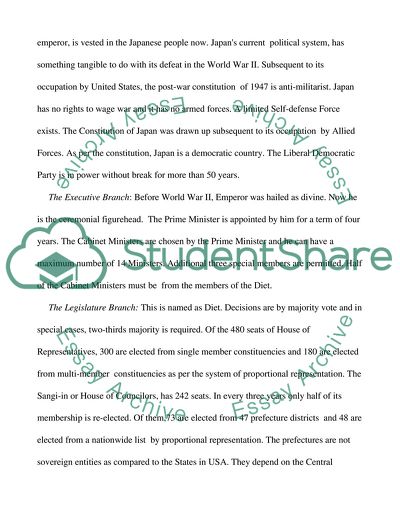Cite this document
(“Is Japan a Democracy, or Not Essay Example | Topics and Well Written Essays - 2000 words”, n.d.)
Is Japan a Democracy, or Not Essay Example | Topics and Well Written Essays - 2000 words. Retrieved from https://studentshare.org/politics/1563542-comparative-politics-final
Is Japan a Democracy, or Not Essay Example | Topics and Well Written Essays - 2000 words. Retrieved from https://studentshare.org/politics/1563542-comparative-politics-final
(Is Japan a Democracy, or Not Essay Example | Topics and Well Written Essays - 2000 Words)
Is Japan a Democracy, or Not Essay Example | Topics and Well Written Essays - 2000 Words. https://studentshare.org/politics/1563542-comparative-politics-final.
Is Japan a Democracy, or Not Essay Example | Topics and Well Written Essays - 2000 Words. https://studentshare.org/politics/1563542-comparative-politics-final.
“Is Japan a Democracy, or Not Essay Example | Topics and Well Written Essays - 2000 Words”, n.d. https://studentshare.org/politics/1563542-comparative-politics-final.


